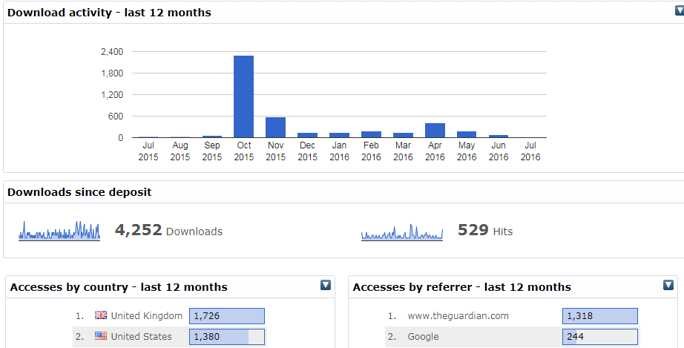How publishing open access raises the profile of your research
We all know that we should be publishing open access. Sharing scientific information is good for science and good for humanity, facilitating progress and helping to distribute its fruits more widely and equitably. And if that doesn’t persuade you, many funders, including the Wellcome Trust and RCUK, mandate that their funded research should be published gold open access, under a CC BY license.
However, there are rather less altruistic reasons for publishing open access, whether via the green or the gold open access route. In this post, we will show you how choosing open access can lead to more readers, more citations, more coverage in news articles and on social media. To put it bluntly, open access gets you noticed.
Citation advantage
Numerous studies have shown that open access papers receive more citations than paywalled articles. The Open Citation Project found that out of 70 studies conducted until 2015, two thirds demonstrated a significant citation advantage. There are, of course, a number of other factors which affect the citability of a paper, not least the quality of the research, and it could be that researchers are more likely to publish their best papers open access — although this is often determined by the funding body.
However, what is also apparent is that the effect on citations is stronger in some science disciplines, particularly medicine. While not all studies show a citation advantage, a review of studies published by Swan in 2010 showed that in medicine the increase in citations with open access ranged from 300 to 450 per cent. Furthermore, given that it can take an average of 17 years for medical research to translate into clinical practice, the full effect of open access on citations may not have been felt yet. Lastly, an older study published in Science in 2009, clearly demonstrated that open access articles are much more likely to be cited by researchers in resource-poor countries.
Citation advantage also applies to open data. An analysis by Piwowar and Vision of 10,555 studies that created gene expression microarray data found that studies that made data available in a public repository received 9 per cent more citations than similar studies for which the data was not made available.
Unsurprisingly, it also turns out that open access articles receive more internet traffic, and are read online and downloaded more frequently. So, publishing open access achieves the aim of getting you more readers from a wider range of research and clinical backgrounds, as well as improving your citation count.
Increased social standing
In reaching across the research community and beyond it, blogs and social media, including Twitter and Facebook, are increasingly valuable for outreach and social engagement. The combination of open access and social media is optimal for promoting research, as paywalled articles are less likely to be shared, retweeted and forwarded.
 For example, a paper by Bertalan Mesko, published in the open access journal Medical Genomics, was strategically promoted via his blogs, Twitter and social research sites, and became one of the most read articles on BioMed Central, achieving a “highly accessed” badge.
For example, a paper by Bertalan Mesko, published in the open access journal Medical Genomics, was strategically promoted via his blogs, Twitter and social research sites, and became one of the most read articles on BioMed Central, achieving a “highly accessed” badge.
And if you want to watch your research go viral, all articles deposited in LSHTM Research Online now show details of how they have been shared via Twitter and other social media platforms, using the Altmetrics service.
More media attention
Science journalists have cottoned onto the fact that when they mention a study, they can often point their readers to the article on the publisher’s site (if it is Gold open access) or to an institutional repository page (for the accepted manuscript, if it is Green open access). In 2015, a study on city cycling by LSHTM researchers Rebecca Steinbach, Judith Green, Jessica Datta and Phil Edwards was highlighted in a feature article in the Guardian on why cycling is disproportionately an activity of affluent, white men, with a link to the accepted manuscript in our repository. This resulted in a massive increase in downloads – over 2,000 in that month alone. Eighteen months later the study was again referenced by an article on race and cycling in The Conversation.
It is plain to see that making research open has huge benefits for the researcher as well as the research community. Publishing open access not only benefits science but can boost career prospects, lead to approaches for collaboration, and benefit your whole team as well as promoting the institution you work for. In an increasingly competitive research environment, open access can, quite simply, give you the edge.
